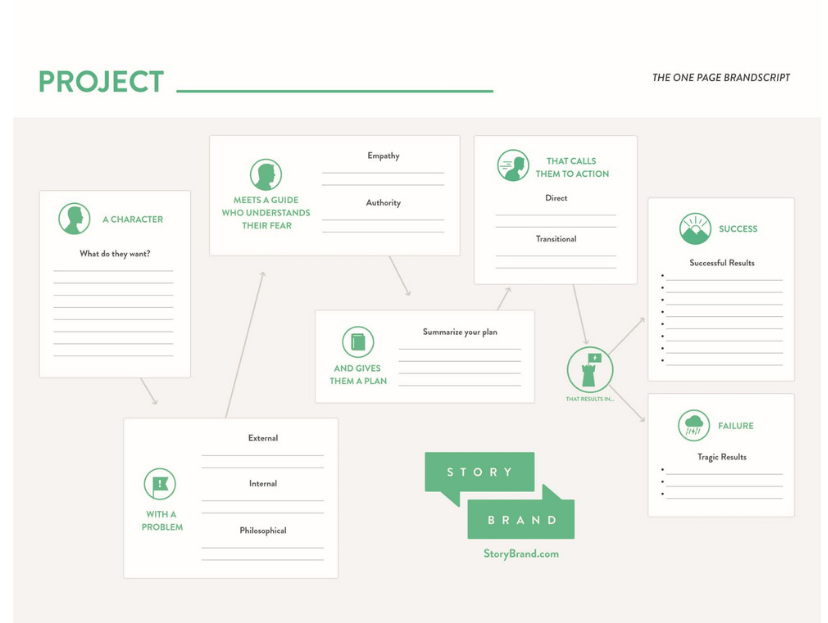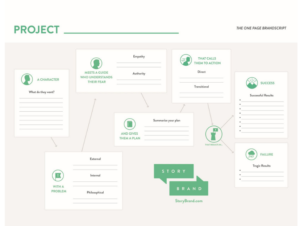
by Eric Dombach | How to Become a Business Coach
If you’re preparing to start or grow your business coaching practice, I want you to think deeply about one of the most important concepts in the business of business coaching: the Effective Billable Rate, or EBR for short.
From an earning perspective, the EBR is the million-dollar difference between consulting and true business coaching. Many new business coaches confuse business coaching with business consulting, but they’re not the same–and believe me, business coaching is the far better gig. In general, consultants base their work on hourly rates and deliverables, not on value, and definitely not on results. A coach, on the other hand, is a valued teacher, mentor, motivator, and educator, and is paid based on value and results. Keep this perspective in mind as we head into this conversation about the effective billable rate.
Business Coaching Is a Top-Earning Profession
Business coaching is not based on an hourly rate. You should set up your contracts so that you get paid a monthly retainer to deliver results. Even still, you should pay attention to your effective billable rate to help you keep track of how efficiently you’re operating your business.
The typical business coach has anywhere from 10 clients to 15 clients at a time, depending on the experience level, each of whom is investing anywhere from $1,000 to $3,000 per month. In return, the coach typically spends 30-60 minutes coaching each client per week. In revenue terms, that’s $10,000 to $45,000 per month in cash flow for 5 to 15 hours of client-facing work each week. At the high end, that’s $750 per hour.
This puts business coaching at the very top of the list for top-earning professionals. Compare that sort of revenue to anesthesiologists, surgeons, chief executives, engineers, attorneys, and so on. Business coaching leaves other professions in the dust–and that’s especially true because you get to keep the profits. You don’t have to share them with a medical practice, engineering firm, or law firm. You don’t have to pay back exorbitant student debt. You can work from the comfort of your home office.
You’ll never generate that kind of income as a consultant because consulting involves providing deliverables based on an hourly rate, no matter how specialized you become. That’s because, as a coach, you’re not trading your time for their money. You’re trading your knowledge for their money––and as long as they get the value and results they expect and need and deserve, it’s a win/win. By the way, this is the beauty of business coaching and I hope you’re pretty pumped about it.
As a coach, you’re not trading your time for their money. You’re trading your knowledge for their money––and as long as they get the value and results they expect and need and deserve, it’s a win/win.
Having said all that, setting up your coaching programs to maintain a high effective billable rate can be a bit tougher than it sounds and takes some careful planning and analysis.
Expected Billable Rate vs. Effective Billable Rate
First, understand the difference between your expected billable rate and your effective billable rate. The expected billable rate is the amount per hour that you receive for actual coaching time (as in our example above of $750/hour). Of course, the time you spend in coaching sessions is only part of the equation. Thus, you should calculate your effective billable rate as the actual, real rate you’re making per hour based on actual, real time you’re investing in your clients when you include all the other things you do to service them.
Let’s say you have a one-on-one coaching client who pays you $1,000 every month for 30 minutes of coaching per week. Your expected billable rate is $465. Great, right? Not so fast. Let’s say you add up the time associated with all the rookie inefficiencies and wasteful habits I see coaches making all the time: extra-long emails about things that should be handled on coaching calls, unplanned bonus phone calls, extra-long coaching sessions that are more educational and teaching in nature because you don’t have a membership site, inefficient billing and collecting practices, and, God forbid, even driving time to see your clients (which you should NEVER do in this age of Zoom or video conferencing!). Do all this, and you can easily add a whole additional hour per week!
Now you’ve got $1,000 divided by 6.45 hours per month—and all of a sudden you’ve gone from $465 per hour to $155 an hour, or about a third of your expected billable rate! That’s decent, but you’re no longer in the top-tier of income-earning professionals. On top of that, you’re spending more time than you need on inefficient client services, and you’re behaving more like a consultant than a coach.
How to Improve Your EBR
Your goal should be to stay in the $250-$500/hour range for your effective billable rate. Here’s how to improve your efficiency:
- Never answer an email that requires more than a paragraph or stay on the phone for more than a minute or two with an unexpected call. If it’s going to require more, defer and say, “Hey, we’re gonna have to do this in our next coaching session.”
- Always bill upfront. You shouldn’t be chasing money. Payments are collected the day your contract is signed, and are for the coming month–NOT the previous one.
- Use automated billing. Make a decision that you simply don’t accept checks or other forms of payment that must be handled manually, but instead automate the process so that the retainer is deducted automatically from their credit card or bank account.
- Have a membership site. Have all the basic content you teach your clients in a membership site (like the one we have at the Coaches’ Coach), and assign clients the learning materials they need to study in advance of your coaching session. That way, you’re not spending your time teaching concepts, but coaching them on the implementation of the concepts they’ve already learned. Do this, and you can keep your calls to just 30-45 minutes!
- Never drive to weekly coaching meetings. It’s such an extraordinary waste of time and you don’t need to do it in an age where you can use technologies like Zoom to enjoy verbal, vocal, and visual interaction with your client. The only possible exception to this rule is if you’re holding a day-long training session with your client’s team. Even then, you can accomplish that virtually as well.
Want to build a business coaching practice with an EBR so high it’d make doctors and lawyers blush? Download our FREE ebook, How to Become a Business Coach, to get your business started.

by Eric Dombach | Business Coach Training
How do you run a business coaching session in 45 minutes or less that provides real value to your clients, helps them move forward, and leaves them with clear, actionable takeaways?
Follow my four-step process and create more effective business coaching sessions, every time.
Step 1. Client Prework
The building blocks of an effective business coaching session happen before you jump on the call. In your shared coaching document (you can get access to our template inside our membership area), require your client to update their latest KPIs, #1 challenge, hot topics, and whether or not they completed their goals for the week at least 24 hours before your coaching session starts. This allows you to dig into the meat of your coaching session immediately, without needing to spend precious time playing catch-up.
Step 2. Coach Review
Similarly, you need to review the coaching document before you begin. Ask yourself these questions in preparation:
- How was my client’s week?
- What do I expect their emotional state to be like in our session? How will I help them?
- Did my client complete their goals? If not, how will I help them?
- In what areas do they need additional awareness?
- In what areas do they need additional education?
- In what areas do they need to be held accountable?
Write down any notes, questions, or insights that you want to be sure to raise during the session. Remember, your job as a coach is to hold them accountable to the goals you’ve set together and to help facilitate their growth.
Remember, your job as a coach is to hold them accountable to the goals you've set together and to help facilitate their growth.
Step 3. During the Coaching Session, Identify and Fill in Goals
Share your screen over Zoom (or whatever video conferencing platform you’re using), and fill in the next week’s goals in real-time, as you agree on them together. This ensures that both of you are clear on what is expected for the coming week.
Step 4. Ask for Their #1 Takeaway
At the end of the session, ask your client to articulate the number one thing they learned from the coaching call. Again, this solidifies their learning and helps you both see and articulate the value your client is receiving from coaching. On weeks there is an especially impressive takeaway or breakthrough, ask them if they’d be willing to share a testimonial about their experience. I also like to encourage them to keep a “Wins Journal,” and so when they experience one, make sure they write it down.
Respect Everyone’s Time
This isn’t a “step” so much as it is a commitment, but whatever you do, be sure to respect everyone’s time. Both you and your client should:
- Come to the session well-prepared.
- Show up on time (I like showing up a couple of minutes early).
- End the call on time.
Do this, and your coaching sessions will be more effective, efficient, and value-packed for clients–which will lead to longer coaching engagements and better results for both you and your clients!
For more great tips and tricks on how to blow your clients out of the water with an amazing business coaching experience, download our FREE ebook, Secrets of a Business Coaching Rock Star.

by Eric Dombach | Business Coaching Systems, Business Coaching Tools
Most coaches have heard of Donald Miller’s StoryBrand framework. His book, Building a StoryBrand: Clarify Your Message So Clients Will Listen, came out in 2017 and since then it’s been a cornerstone marketing model for large and small brands alike.
Here at the Coaches’ Coach, we implemented it in 2018 as a way to connect more deeply with our clients. It helped us crystallize our marketing message; more importantly, it helped us better understand our clients and prospects.
The central thesis of StoryBrand is that most businesses go to market with a very unclear, confusing, and self-centered message. We can all improve our marketing by focusing on our customers and making them the hero, positioning ourselves as a guide with a plan to help them.
Here’s a brief rundown of the framework, so that you can begin making the shift in your marketing (and help your clients do the same).
We can all improve our marketing by focusing on our customers and making them the hero, positioning ourselves as a guide with a plan to help them.

A BrandScript emphasizes the customer’s journey; you can sign up for a free StoryBrand account and create as many BrandScripts as you’d like, using their online tool.
A Character
With StoryBrand, you begin with a character who wants something. This is your prospect or customer. See how it immediately shifts the focus from you to them? You’re not the hero of their story–they are. (You are the hero of your story, which is precisely why so much marketing messaging is ineffective–you’re centering yourself, not them!) Start with them, and your messaging will immediately become more salient.
with a Problem
Why do business owners and entrepreneurs need to hire you as a coach? Why do the clients you coach need the products and services your clients provide? Because they have problems they need to solve. These problems can be external, internal, or philosophical (or all three!). But the better you can understand and articulate your clients’ problems, the more they’ll feel seen and understood, and your marketing messaging will resonate more deeply as a result.
Meets a Guide Who Understands their Fear
Finally, this is where you come in! You’re not the hero of their story, you’re their trusted guide. With empathy and authority, you meet them where they are on their journey.
and Gives Them a Plan
Here, you help them see the way through their difficulty by positioning your product or service as a plan that can help them resolve their problem. Do you see the throughline here? It’s not about what your product or service does–it’s about what your product or service does to help your customer solve their problem.
that Calls Them to Action
Invite your customer to take action on the plan you’ve presented them. Give them an immediate, actionable, simple next step to get started.
that Results in Success
Outline what will happen (to the good!) when they implement the plan. This is about outcomes, and painting a picture of how it will feel when their problem is resolved.
(or Failure)
What will happen if they don’t implement the plan their guide has presented them? What kind of tragic results will they encounter? What fears will be realized?
Inside the Coaches’ Coach membership area, you’ll find all the tools, frameworks, and systems we recommend to help you build a profitable business coaching practice and coach your clients more effectively. Sign up for a FREE 30-day trial to get access.

by Eric Dombach | Business Coaching Systems
All business problems fall into one of three categories: time, team, and money. This was the driving insight of the 21 Silver Bullets I invented as a framework to help communicate the value of business coaching to prospective clients—and, ultimately, to coach them into more effective, profitable businesses. Of these three categories, team is one that often flummoxes the business owner clients you’ll coach—largely because many of them came into their role either by being extremely effective practitioners or hard-charging entrepreneurs. That can make people management feel like a foreign language. Fortunately, as a coach, you can help your clients build better teams.
I encourage my business coaches to introduce their clients to our Team Building System, which is a reliable system for placing team members in the roles best suited to their strengths and building them into a powerfully cohesive and committed team that delivers business results. If your client discloses that there is relational conflict, communication problems, and lack of commitment, this is the solution they desperately need.
Coaching Clients to Build Better Teams
First, have your client and key leaders read Patrick Lencioni’s The Five Dysfunctions of a Team. Lencioni has amazing insights on teamwork from his years as a consultant for Fortune 500 organizations and The Five Dysfunctions of a Team is a fable as well as a framework for building great teams.
His model says that most dysfunctional teams are, at the core, lacking trust. The absence of trust between team members leads to five dysfunctions:
- Gossip;
- Not putting in the extra work;
- Lack of collaboration;
- Not giving each other credit; and, MOST critically,
- Lack of conflict around important ideas.
That last one often surprises business owners, because they assume that conflict is bad. The truth is, healthy teams have healthy conflict; in unhealthy teams, folks acquiesce to the loudest voice for fear of repercussions. This sets off a negative feedback loop: because they miss out on the robust debate and decision-making, they lack commitment to the direction that gets proposed. Lack of commitment leads to lack of accountability. And lack of accountability leads to inattention to results and substandard performance.
In Lencioni’s words: “Look, it’s not finance, not strategy, not technology––it is teamwork that remains the ultimate competitive advantage, both because it is so powerful and so rare.”
The antidote that Lencioni proposes is called the Five Behaviors of a Cohesive Team Framework. It is crucial that you coach your clients through this framework. They must build an amazing team or they’ll never make it––they WILL fail.
Your clients must build an amazing team or they’ll never make it––they WILL fail.
Your clients need a team that trusts. Trust lies at the heart of their success. And just as a lack of trust sets off a negative feedback loop, trust sets off a positive feedback loop that eliminates the dysfunction: trust leads to healthy conflict, however uncomfortable it may be. Healthy conflict leads to the best solutions, which leads to commitment and clarity around those solutions. Therefore, team members are willing to be held accountable. And teams that are committed will focus on results and ultimately WIN.
As a coach, first assess your client’s team. Ask them questions about the levels of trust, conflict, commitment, accountability, and results they’re getting. Then work with them to transform their team into one that is powerful and high-performing.
Our comprehensive business coaching system gives you all the tools, insights, and training you need to do exactly that—get a FREE 30-day trial of our members’ portal to get everything you need to help your clients build better teams.

by Eric Dombach | Business Coach Training
Often, when I’m working with business coaches, I’ll ask: “What do you believe is the single most important driver in building a profitable business coaching firm?”
No one ever gives the right answer.
Some say “coaching skills.”
Some say “getting clients results.”
Some say “getting the good clients.”
Some say “charging more.”
And there are all sorts of other responses I hear.
Now don’t get me wrong, many of them are linked to profitability. But when you look for the SINGLE MOST important factor, it is none of these.
The single most important driver in building a profitable business coaching firm is simply this:
Low Client Cost of Acquisition
Why?
Because it’s impossible to build a profitable firm if your client acquisition costs are out of control! The lower your cost of acquisition is, the more cash flow, stability, and revenue you’ll generate.
It's impossible to build a profitable firm if your client acquisition costs are out of control! The lower your cost of acquisition is, the more cash flow, stability, and revenue you'll generate.
In other words, this means mastering your sales and marketing.
More specifically, it means mastering high-leverage, low-cost marketing strategies—which, to be clear, also tend to require the highest effort.
They are:
- Getting the majority of your clients through referrals.
- Strategic alliances with non-competitive entities that serve a similar demographic (think accountants, marketing consultants, attorneys, etc.).
- Servicing ever-higher quality—which equals better-paying!—clients.
- Keeping these clients longer and longer.
It’s important to note that many of these strategies start to take off after you’ve established yourself in your niche. That’s because it takes time and skill to build up a network of trusted collaborators and satisfied clients. You can’t simply turn these strategies on and off like a faucet.
While you’re getting started, accept that you’ll probably need to spend more time on low-leverage, high-cost marketing such as digital advertising, outsourced telemarketing, and good old-fashioned direct mail. (That’s why I always recommend to beginning business coaches that they need to have a “war chest” of at least six months’ marketing budget before launching their practice full-time.)
But your objective should always be to cultivate relationships with clients and contacts who can help you deploy these high-leverage, low-cost tactics.
As you shift the balance of your marketing mix to these strategies from lower-leverage, higher-cost mass marketing efforts, you’ll see your cost of acquisition fall. More importantly, you’ll see yourself building the profitable business coaching firm you’ve always dreamed of!
For more great insights like this, check out our FREE ebook, Secrets of a Business Coaching Rock Star.
Page 8 of 22« First«...678910...20...»Last »






